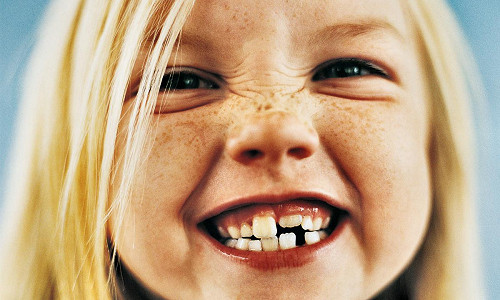Bioengineers have developed a new method of replacing missing teeth with a bioengineered material generated from a person’s own gum cells. Current implant-based methods of whole tooth replacement fail to reproduce a natural root structure and as a consequence of the friction from eating and other jaw movement, loss of jaw bone can occur around the implant. The research is led by Professor Paul Sharpe, an expert in craniofacial development and stem cell biology at King’s College London and published in the Journal of Dental Research.
Research towards achieving the aim of producing bioengineered teeth — bioteeth — has largely focussed on the generation of immature teeth (teeth primordia) that mimic those in the embryo that can be transplanted as small cell ‘pellets’ into the adult jaw to develop into functional teeth.
Remarkably, despite the very different environments, embryonic teeth primordia can develop normally in the adult mouth and thus if suitable cells can be identified that can be combined in such a way to produce an immature tooth, there is a realistic prospect bioteeth can become a clinical reality. Subsequent studies have largely focussed on the use of embryonic cells and although it is clear that embryonic tooth primordia cells can readily form immature teeth following dissociation into single cell populations and subsequent recombination, such cell sources are impractical to use in a general therapy.
Professor Sharpe says: ‘What is required is the identification of adult sources of human epithelial and mesenchymal cells that can be obtained in sufficient numbers to make biotooth formation a viable alternative to dental implants.’
In this new work, the researchers isolated adult human gum tissue from patients at the Dental Institute at King’s College London, grew more of it in the lab, and then combined it with the cells of mice that form teeth. By transplanting this combination of cells into mice the researchers were able to grow hybrid human/mouse teeth containing dentine and enamel, as well as viable roots.
Professor Sharpe concludes: ‘Epithelial cells derived from adult human gum tissue are capable of responding to tooth inducing signals from embryonic tooth mesenchyme in an appropriate way to contribute to tooth crown and root formation and give rise to relevant differentiated cell types, following in vitro culture.
‘These easily accessible epithelial cells are thus a realistic source for consideration in human biotooth formation. The next major challenge is to identify a way to culture adult human mesenchymal cells to be tooth-inducing, as at the moment we can only make embryonic mesenchymal cells do this.’
Story Source:
The above story is reprinted from materials provided by King’s College London, via EurekAlert!, a service of AAAS.





